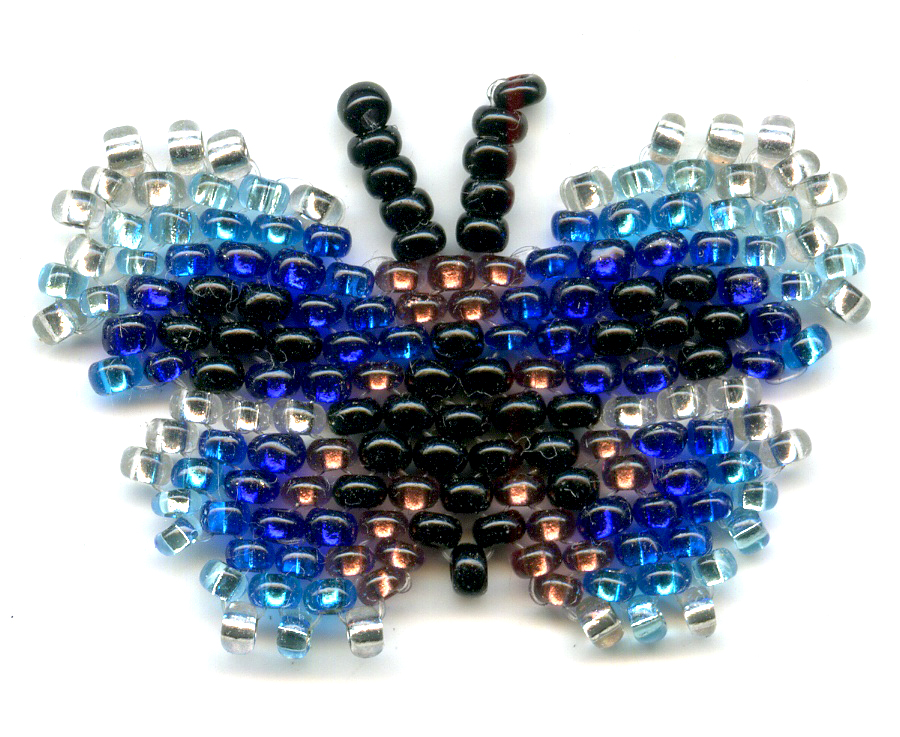
Asterope optima philotima (Rebel, 1912) inhabits Peru.
Its wingspan is 57–68 mm.
This bead butterfly is woven of 8 colours.
The bead pattern is available at https://bead-patterns.com/beadpattern/butterfly-callithea-philotmia-micro
Butterflires/moths 12 beads in height

Asterope optima philotima (Rebel, 1912) inhabits Peru.
Its wingspan is 57–68 mm.
This bead butterfly is woven of 8 colours.
The bead pattern is available at https://bead-patterns.com/beadpattern/butterfly-callithea-philotmia-micro
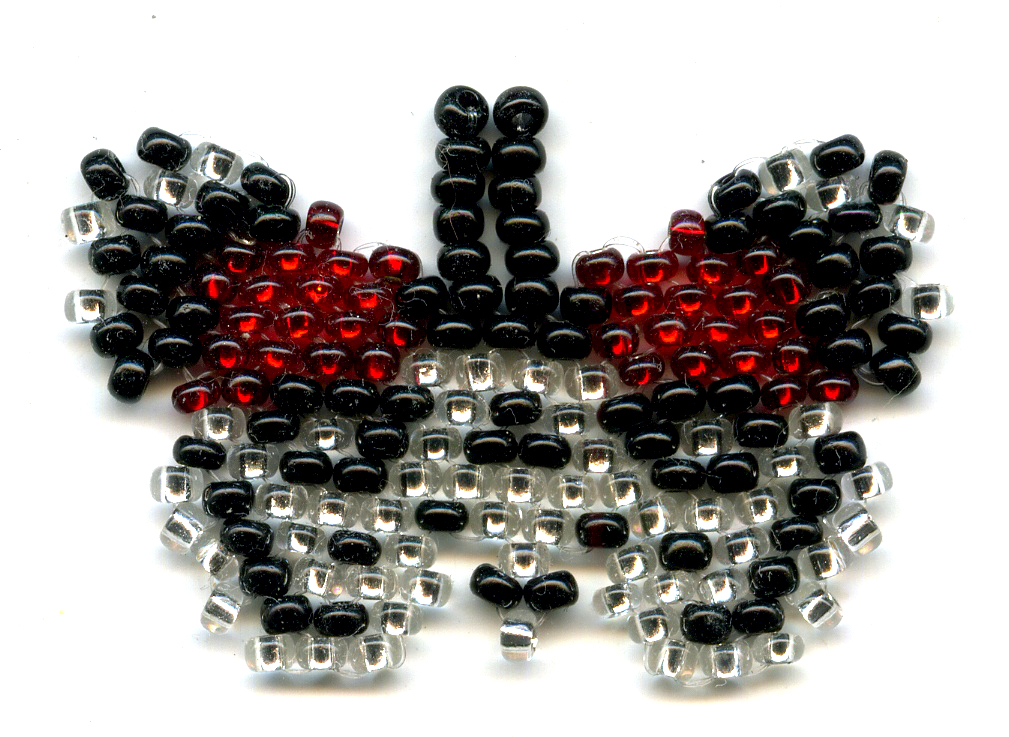
Catacore kolyma (Hewitson, 1858), or the Kolyma eighty-eight inhabits South America.
This bead butterfly is woven of 4 colours.
The bead pattern is available at https://bead-patterns.com/beadpattern/butterfly-catacore-kolyma-micro
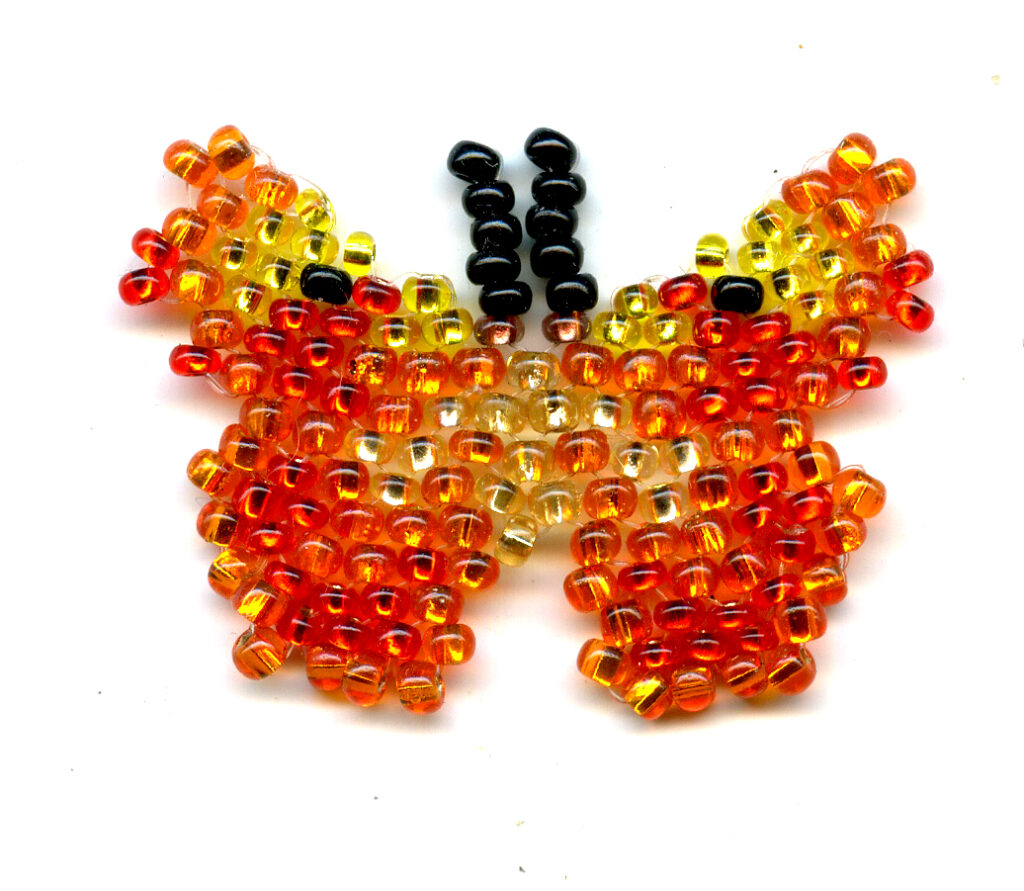
Catopsilia Solstitia ( Butler, 1869) inhabits Cuba. The wingspan is 80-90 mm.
The butterfly is a subspecies of Phoebis avellaneda.
This bead butterfly is woven of 7 colours.
The bead pattern is available at https://bead-patterns.com/beadpattern/butterfly-catopsilla-solstitia-micro
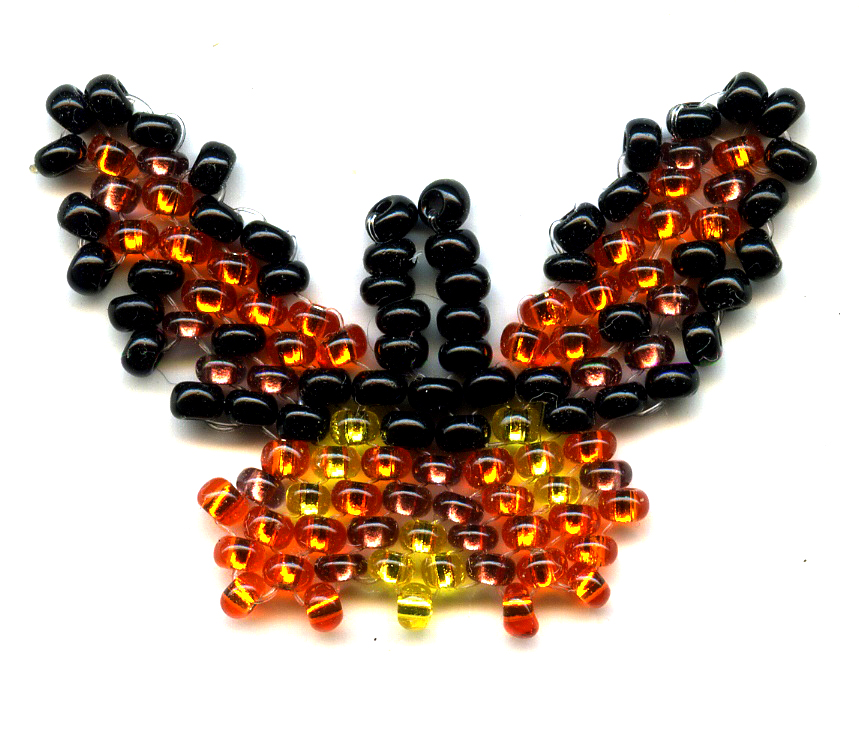
Ornithoptera croesus lydius (Felder & Felder, 1865), or Wallace’s Golden Birdwing got its binominal name in honour of Croesus, king of Lydia from 560 to 547 BC.
The butterfly inhabits northern Maluku in Indonesia. The male’s wingspan is 16 cm.
This bead butterfly is woven of 4 colours.
The bead pattern is available at https://bead-patterns.com/beadpattern/butterfly-ornithoptera-croesus-micro
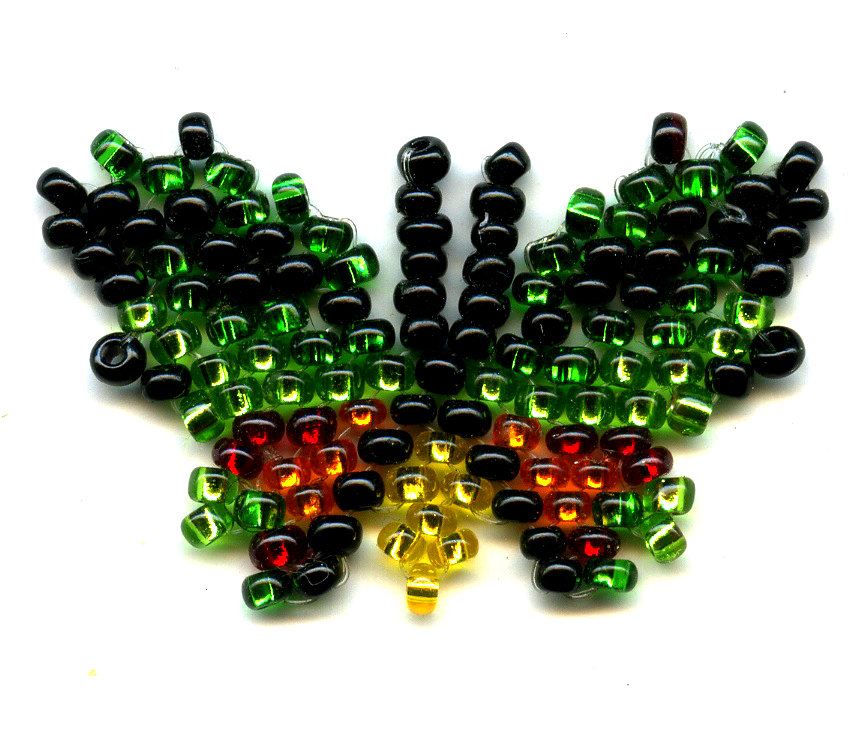
Ornithoptera paradisea (Staudinger 1893), or the paradise birdwing is a rare butterfly of Papua New Guinea. The wingspan of the butterfly is about 15 cm.
This beade butterfly is woven of 6 colours.
The bead pattern is available at https://bead-patterns.com/beadpattern/butterfly-ornithoptera-paradisea-micro
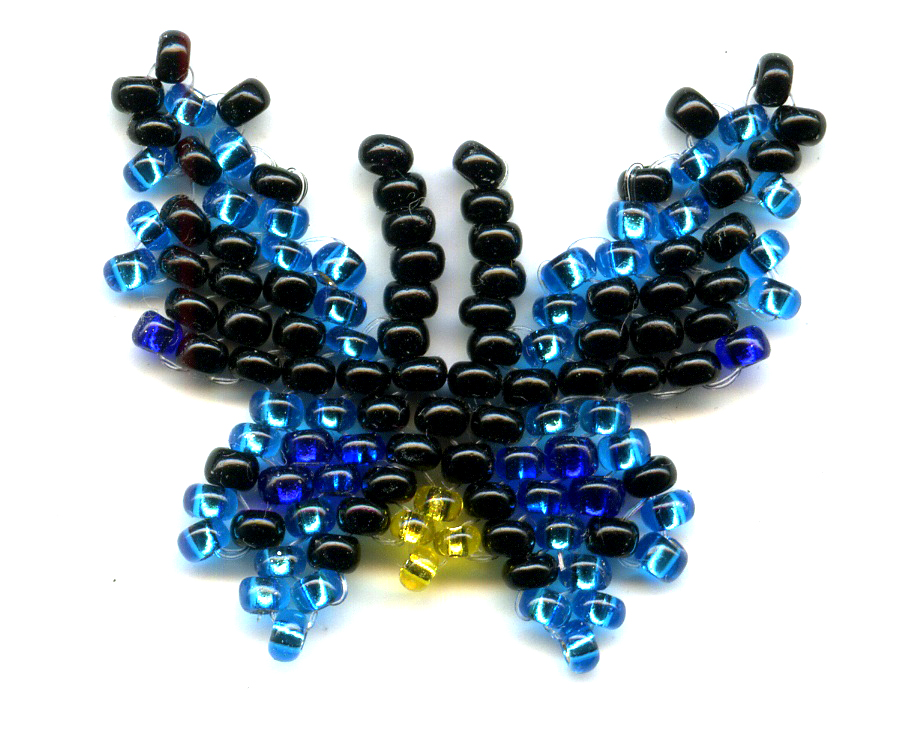
Ornithoptera priamus (Linnaeus, 1758), or Priam’s Birdwing, is named in honor of Priam, the last king of Troy.
Ornithoptera priamus urvillianus (Guérin-Méneville, 1838) was named in honour of d’Urville island where it was first found.
It inhabits New Ireland and Bougainville, Papua New Guinea, and Solomon Islands.
The wingspan of the males is 14 cm.
This bead butterfly is woven of 5 colours.
The bead pattern is available at https://bead-patterns.com/beadpattern/butterfly-ornithoptera-priamus-urvilianus-micro
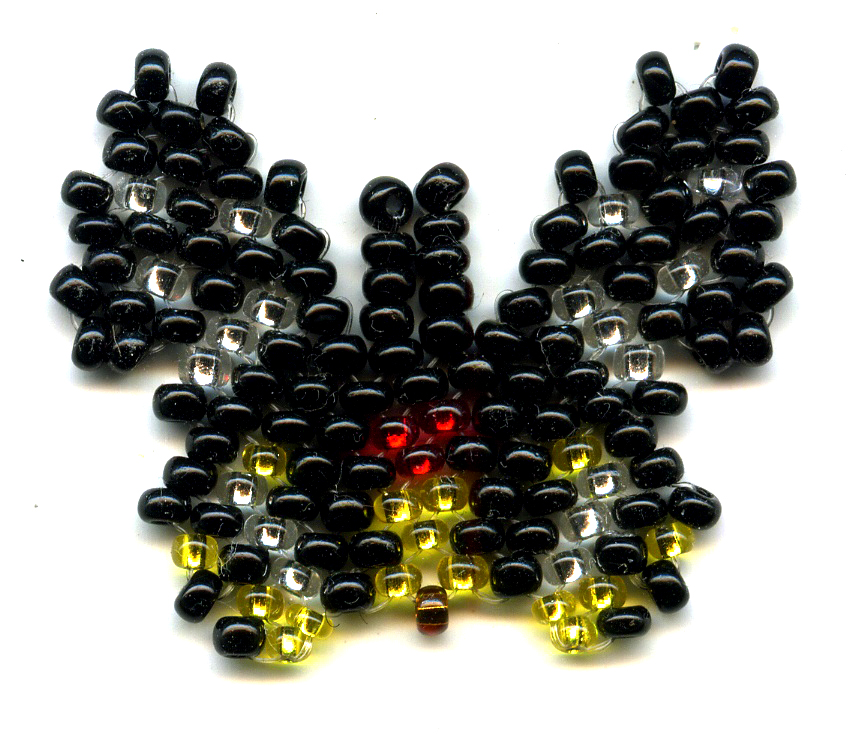
Ornithoptera priamus (Linnaeus, 1758), or Priam’s Birdwing, is named in honor of Priam, the last king of Troy. It inhabits Australia, Papua New Guinea, and Solomon Islands.
The species is very variable, it has of about a hundred subspecies. While the males of the subspecies are multicoloured and extremely different (blue, green, golden, sea-green), the females are more modest in colouring and sometimes look like other Ornithoptera females. But in wingspan the females are much larger than males, they are 20 cm.
This bead butterfly is woven of 5 colours.
The bead pattern is available at https://bead-patterns.com/beadpattern/butterfly-ornithoptera-priamus-female-micro
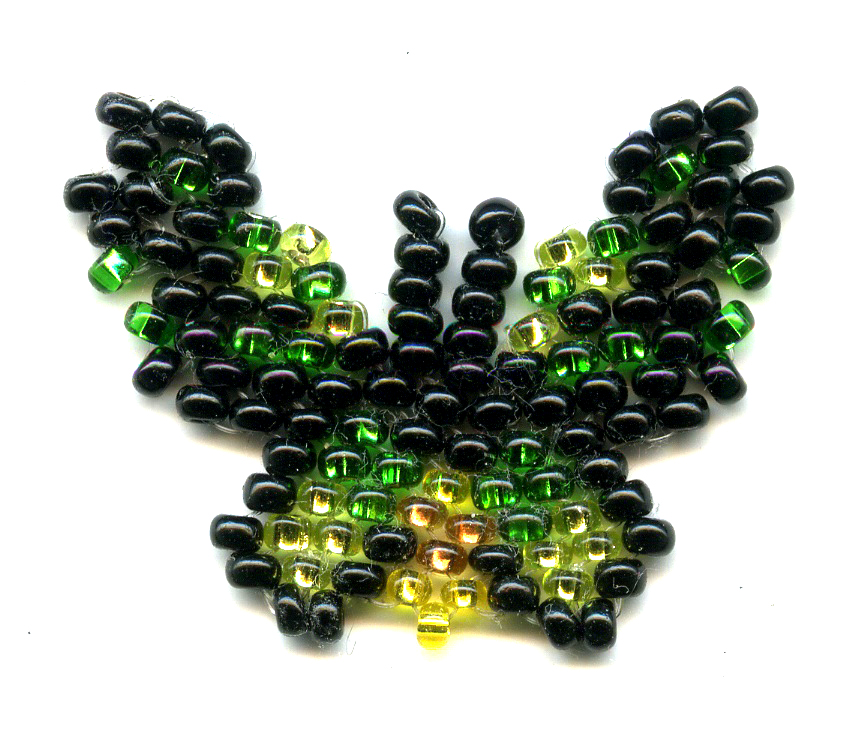
Ornithoptera priamus (Linnaeus, 1758) is named in honor of Priam, the last king of Troy.
Ornithoptera priamus poseidon (Doubleday, 1847) is also known as Common Green Birdwing, Cape York Birdwing, Priam’s Birdwing or Northern Birdwing. It inhabits central and south Moluccas, New Guinea, Bismarck Archipelago, Solomon Islands, and northeast Australia. The wingspan of the males is 14 cm.
This bead butterfly is woven of 5 colours.
The bead pattern is available at https://bead-patterns.com/beadpattern/butterfly-ornithoptera-priamus-poseidon-micro
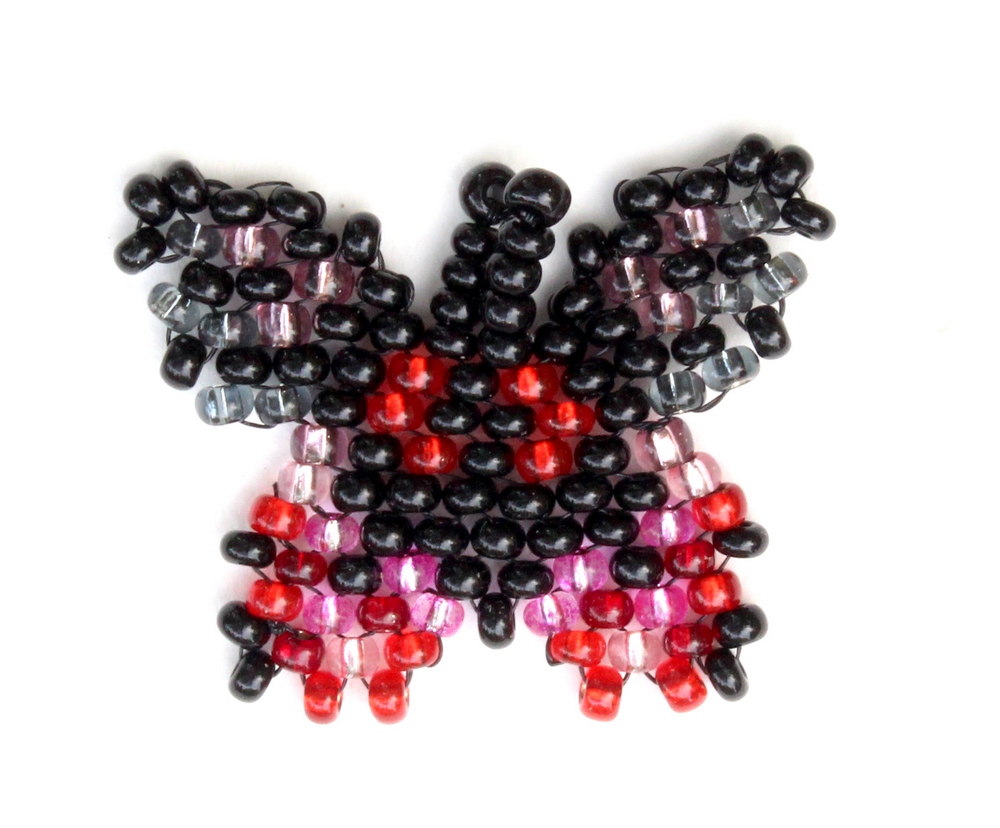
Papilio rumanzovia (Eschscholtz, 1821), or the scarlet Mormon or red Mormon is named in honor of Nikolay Rumyantsev, Russian wise diplomat and generous philanthropist. In 1815 Nikolay Rumyantsev sponsored a a round-the-world sea expedition on the ship “Rurik” under the command of Otto Kotzebue for the discovery and development of the Northwest Passage: a sea route from the Bering Sea to the Atlantic Ocean along the coast of North America. The expedition lasted three years and was also ethnographic and natural-scientific in nature.
It was during this expedition in the Philippines that the Russian entomologist Johann Eschscholtz first discovered and then described a large (up to 14 cm in wingspan) black-pink-red butterfly, which he named after the organizer of the expedition, the Rumyantsev’s swallowtail (Papilio rumanzovia).
It is remarcable that inspite the bright, frightening coloring of the undersides of the wings, Papilio rumanzovia is non-venomous. However, by pretending to be dangerous, it avoids being attacked by birds.
Papilio rumanzovia inhabits Philippines and Taiwan.
This bead butterfly is woven of 9 colours.
The bead pattern is available at https://bead-patterns.com/beadpattern/butterfly-papilio-rumanzovia-micro
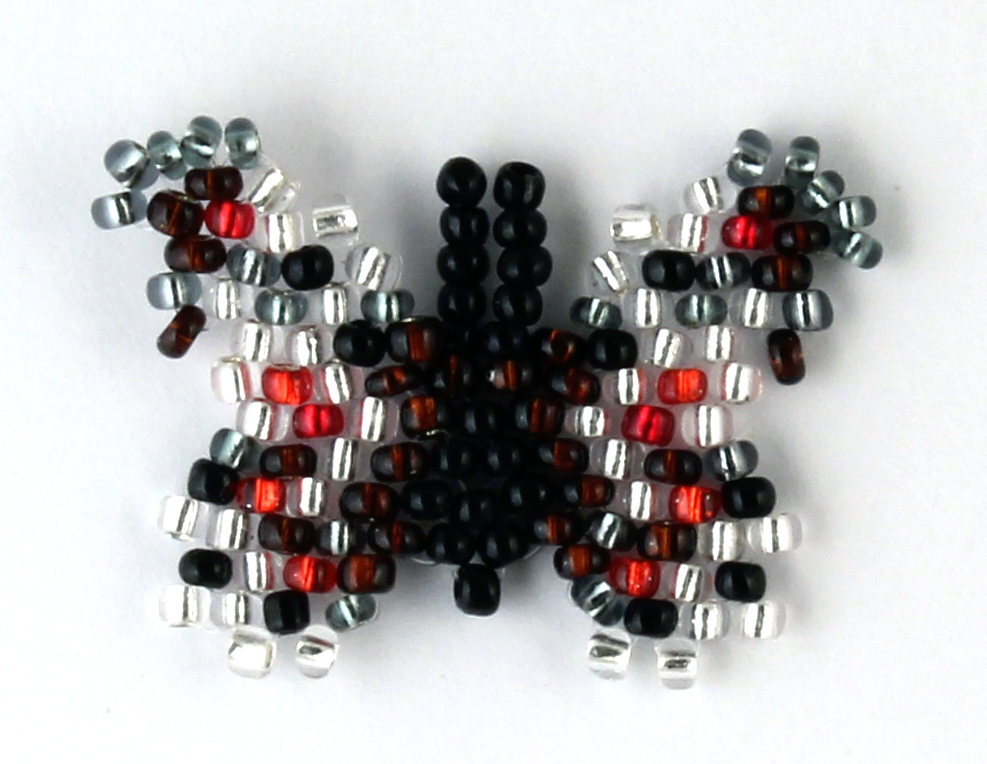
Parnassius apollo (Linnaeus, 1758), also called the Mountain Appolo, is a relict butterfly (one of the first butterflies on the earth). Inhabits mountain areas of Northern Europe and Asia. The butterfly got its name in honour of Apollo, Greek god of arts and poetry.
The wingspan is about 8 cm.
This bead butterfly is woven of 5 colours.
The bead pattern is available at https://bead-patterns.com/beadpattern/butterfly-parnassius-apollo-micro